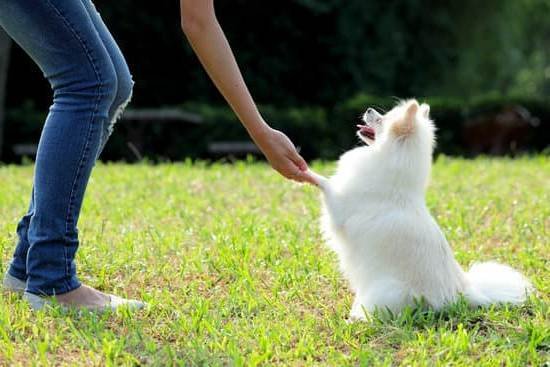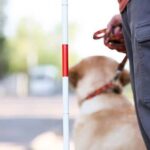How do you train a dog to poop outside? Potty training is a crucial aspect of raising a well-behaved and happy dog. It not only promotes hygiene and cleanliness but also strengthens the bond between you and your pet. In this article, we will explore the essential steps to effectively train your dog to do their business outside, from understanding the importance of potty training to troubleshooting common problems that may arise during the process.
Potty training should ideally begin when your dog is still a puppy, as it sets the foundation for good habits early on. The right age to start potty training can make a significant difference in how quickly your dog learns and adapts to going outside. Establishing a routine for their potty breaks and choosing the right outdoor spot are also crucial factors in successful potty training.
Positive reinforcement is key when it comes to encouraging your dog to poop outside. Using rewards and praise will motivate them to repeat desired behaviors. And while accidents may happen, it’s important to address setbacks with patience and understanding. Additionally, recognizing the signs that indicate when your dog needs to go outside is essential in preventing accidents indoors. All these aspects contribute to consistent and effective potty training for your canine companion.
The Best Age to Start Potty Training a Dog and Why It Matters
Potty training for dogs is an essential aspect of their overall training and development. It not only promotes good hygiene but also creates a harmonious living environment for both pets and their owners. One crucial factor to consider when potty training a dog is the age at which training should ideally commence.
The age at which potty training should begin greatly impacts the effectiveness and success of the process. Here are some key points to note about the best age to start potty training a dog:
– **Early Start:** Potty training should ideally begin when a dog is still a puppy, preferably between 12-16 weeks old. At this age, puppies are more receptive to learning new behaviors and habits.
– **Physical Development:** Waiting until your dog is physically mature can lead to entrenched habits that are harder to break. Starting early allows them to learn bladder control and develop the habit of pooping outside from an early age.
– **Behavioral Flexibility:** Younger dogs are more adaptable and open to learning new routines, making it easier for them to grasp the concept of outdoor pooping. Older dogs, on the other hand, may have already formed habits that contradict this new training.
Establishing a Routine for Your Dog’s Potty Breaks
When it comes to potty training your dog, one of the most important things you can do is establish a consistent routine for their potty breaks. A routine helps your dog understand when and where they should go to the bathroom, making the training process much more effective. Here are some tips for establishing a routine for your dog’s potty breaks:
- Take your dog outside first thing in the morning, as soon as they wake up. This will help reinforce the idea that they should do their business outside.
- Take your dog out after meals, as eating often stimulates the need to go to the bathroom.
- Take your dog out at regular intervals throughout the day, such as every 2-4 hours depending on their age and bladder control.
Consistency is key when it comes to establishing a routine for your dog’s potty breaks. By taking them out at the same times every day, you are helping them develop good habits and reinforcing the behavior you want to see. Remember that puppies have smaller bladders and may need to go out more frequently than adult dogs.
In addition to regular potty breaks, it’s important to supervise your dog closely while they are outside so that you can give them immediate praise and rewards when they go to the bathroom in the right spot. With time and patience, following a consistent routine will help your dog learn where and when they should be doing their business.
Choosing the Right Outdoor Potty Spot for Your Dog
Consider Your Dog’s Preferences
When choosing the right outdoor potty spot for your dog, it’s important to consider your dog’s preferences. Some dogs prefer certain types of surfaces, such as grass or gravel, while others may have a preference for a specific location in the yard. Understanding what your dog prefers can help you create a designated potty area that they are more likely to use consistently.
Accessibility and Safety
Another factor to consider when choosing a potty spot for your dog is accessibility and safety. The spot should be easily accessible for both you and your dog, especially during unfavorable weather conditions. Additionally, ensure that the chosen area is safe for your dog to eliminate without any potential hazards or distractions.
Avoiding High-Traffic Areas
It’s also crucial to avoid high-traffic areas when designating an outdoor potty spot for your dog. Selecting a quiet and secluded area can help reduce distractions and make it easier for your dog to focus on their business. This will also minimize the chances of accidents occurring while they are distracted by passing people or animals.
By taking into account these factors, you can choose the right outdoor potty spot for your dog that is conducive to successful potty training and helps set them up for good habits in the future.
Using Positive Reinforcement and Rewards to Encourage Outdoor Pooping
When potty training your dog, positive reinforcement and rewards can be a powerful tool in encouraging outdoor pooping. Dogs respond well to positive reinforcement, and it helps them associate the act of pooping outside with something enjoyable.
Choose the Right Rewards
When using positive reinforcement, it’s important to choose the right rewards for your dog. This could be a small treat, verbal praise, or even a favorite toy. The key is to find out what motivates your dog the most and use that as a reward for pooping outside.
Timing Is Everything
Timing is crucial when using positive reinforcement for potty training. Make sure to reward your dog immediately after they poop outside. This will help them make the connection between their action and the reward.
Consistency Is Key
Consistency is essential when using positive reinforcement. Make sure to reward your dog every time they poop outside, especially during the initial stages of potty training. This will reinforce the behavior and encourage them to continue doing it.
By using positive reinforcement and rewards effectively, you can encourage your dog to poop outside consistently, making the potty training process more successful and less stressful for both you and your furry friend.
Dealing With Accidents and Setbacks During the Potty Training Process
Accidents are a normal part of the potty training process for dogs, and it is important for owners to be patient and understanding when they occur. Whether your dog has an accident indoors or struggles to consistently poop outside, setbacks are to be expected during the training process.
One common mistake that dog owners make is punishing their pets for accidents, but this can actually lead to more anxiety and fear, further hindering the potty training progress. Instead, remain calm and redirect your dog’s behavior towards the desired outdoor pooping habits.
When accidents happen, it is important to clean up thoroughly using an enzyme-based cleaner that will effectively remove any lingering scent from indoor accidents. Dogs have a very strong sense of smell, so leaving any traces of urine or feces behind can signal to them that it is an acceptable area for elimination.
Additionally, keep in mind that every dog is different in terms of their learning pace and behaviors. Some may pick up on outdoor pooping quickly while others may need more time and consistency before fully grasping the concept.
Reassessing your dog’s potty training routine and identifying any potential issues can be helpful in addressing setbacks. Look at factors such as the frequency of potty breaks, the timing of meals, or any changes in environment that may be affecting your pet’s ability to poop outside consistently. Consider consulting with a professional trainer or veterinarian if you continue to experience significant challenges with your dog’s potty training progress despite your best efforts.
| Aspect | Recommendation |
|---|---|
| Punishment | Avoid punishing your dog after accidents |
| Cleaning | Use an enzyme-based cleaner to thoroughly clean indoor accidents |
| Consultation | If there continuing difficulties with outdoor pooping consult with a professional trainers or veterinarians |
Tips for Troubleshooting Common Potty Training Problems
Potty training a dog can come with its fair share of challenges, and it’s not uncommon for owners to encounter some common problems along the way. One of the most frequent issues is dealing with accidents inside the house, which can be frustrating for both the dog and the owner.
One way to address this problem is by closely supervising your dog, especially during the initial stages of potty training. This means keeping a close eye on them and being able to anticipate when they might need to go outside.
Another common challenge in potty training is getting your dog to understand that they should only relieve themselves outside. If your dog has a tendency to have accidents indoors, it’s important not to scold or punish them. Instead, focus on using positive reinforcement techniques such as rewards and praise when they do their business outside. Consistency in your approach is key, as dogs thrive on routine and clear expectations.
In some cases, dogs may show signs of reluctance or fear when it comes to going outside to poop. This could be due to previous negative experiences or a lack of exposure to outdoor environments. To help overcome this issue, gradually introduce your dog to new surroundings and create a positive association with outdoor potty breaks. By taking small steps and being patient with your pet, you can help them become more comfortable with the idea of pooping outside.
| Common Potty Training Problems | Troubleshooting Tips |
|---|---|
| Accidents inside the house | Closely supervise your dog; use positive reinforcement |
| Reluctance or fear of going outside | Gradually introduce your dog to outdoor environments; be patient and persistent |
Consistency Is Key
Once you have successfully established a routine and chosen the right outdoor potty spot for your dog, it is crucial to reinforce good potty habits consistently. Consistency is key when it comes to maintaining your dog’s potty training progress.
Dogs thrive on routine, so it is important to stick to a consistent schedule for their potty breaks. This means taking them out at the same times every day, such as first thing in the morning, after meals, and before bedtime.
In addition to maintaining a consistent schedule, it is important to use positive reinforcement and rewards to encourage your dog to continue pooping outside. Whenever your dog goes to the bathroom in the designated outdoor spot, be sure to give them plenty of praise and rewards. This will help reinforce the behavior and make them more likely to continue pooping outside in the future.
It’s also essential to be patient and understanding during this process. Setbacks and accidents are bound to happen, especially during the early stages of potty training. Instead of getting frustrated with your dog, remain patient and continue using positive reinforcement to encourage good potty habits. With time, consistency, and patience, your dog will eventually develop reliable potty habits outside.
Understanding the Signs That Your Dog Needs to Go Outside to Poop
One common sign that your dog may need to go outside is if they start circling or sniffing around a particular area. This behavior often indicates that they are searching for a suitable spot to do their business. Additionally, if your dog suddenly becomes restless or begins pacing, it may be a sign that they need to go outside to poop.
Another important sign to watch for is excessive whining or barking at the door. This could indicate that your dog is trying to communicate their need to go outside. Some dogs may even come and stare directly at you when they need to go out, so it’s essential to pay attention to their body language and vocalizations.
In addition to these behavioral cues, some dogs may also display physical signs that they need to go outside, such as sudden sniffing of the ground, scratching at the door, or even heading towards their leash or the door where their leash is kept. By recognizing and responding promptly to these signs, you can effectively reinforce good potty habits in your dog and minimize accidents indoors.
Addressing Any Medical Issues That May Affect Your Dog’s Potty Training Progress
In conclusion, potty training a dog to poop outside requires patience, consistency, and understanding of your pet’s needs. It is important to recognize the significance of potty training for dogs to ensure a clean and hygienic living environment for both the pet and its owners.
Starting the training process at the right age and establishing a routine for potty breaks are crucial steps in the process. Choosing the right outdoor spot, using positive reinforcement, and dealing with setbacks are also important aspects to consider.
Additionally, it is essential to be aware of any medical issues that may affect your dog’s potty training progress. Addressing these issues promptly can help alleviate any difficulties in the training process and ensure that your pet remains healthy and comfortable. Consistency in reinforcing good potty habits is key to successful training, as well as understanding the signs that your dog needs to go outside.
By following these guidelines and being patient with your pet, you can effectively train your dog to poop outside and create a harmonious living environment for both you and your furry companion. Remember that every dog learns at its own pace, so being attentive to their needs is vital throughout the potty training process. With dedication and understanding, you can achieve success in potty training your dog.
Frequently Asked Questions
How Long Does It Take to Train a Dog to Poop Outside?
The time it takes to train a dog to poop outside can vary depending on the dog’s age, breed, and previous training. For some dogs, it may take just a few weeks of consistent training, while others may take several months.
It’s important to be patient and consistent with the training process, as rushing it can lead to setbacks.
How Do I Get My Dog to Poop Outside the House?
Getting your dog to poop outside the house involves creating a routine, taking them out regularly, and positively reinforcing their behavior when they eliminate outdoors. It’s essential to pay attention to their body language and signals that they need to go, and then promptly bring them outside. Consistency and patience are key in this process.
How Do I Train My Dog to Go Potty Outside?
To train your dog to go potty outside, establish a regular feeding schedule and take them out at specific times throughout the day, such as after meals or waking up from a nap. When they do eliminate outside, praise them and offer treats as positive reinforcement.
Accidents will happen during the training process, but it’s important to remain patient and avoid punishment as this can hinder their progress. With consistent training and positive reinforcement, most dogs can learn to go potty outside effectively.

Welcome to the blog! I am a professional dog trainer and have been working with dogs for many years. In this blog, I will be discussing various topics related to dog training, including tips, tricks, and advice. I hope you find this information helpful and informative. Thanks for reading!





